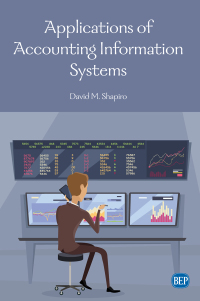just question 1

etv A 00 7 Questions and Problems 1. Prepare the income statement for year 2 and the balance sheet at the end of year 2 for P.V. Ltd. in Example 2.1 under the assumption that P.V. Ltd. pays no dividends. 2. Show that an owner of P.V. Ltd. in Example 2.1 would not care whether P.V. Ltd. paid any dividend at the end of year 1. State precisely why this is the case. 3. Explain why expected net income is also called "accretion of discount." 4. Show that an owner of P.V. Ltd. in Example 2.2 would not care whether P.V. Ltd. paid any dividend at the end of year 1. Assume that the good-economy state was realized in year 1. 5. Two well-known models of firm value are the dividend discount model and the dis counted cash flow model. Under ideal conditions, each model gives the same result. In Example 2.2, assume that P.V. Ltd. pays no dividends over its life, until a liquidating dividend is paid at the end of year 2 consisting of its cash on hand at that time. Required Verify that the market value of P.V. Ltd. at time 0 based on the expected present value of its future dividend equals $260.33, equal to P.V.'s market value based on expected future cash flows 6. A simple example of the difference between ideal and non-ideal conditions is the rolling of a die Required dete assetis Then firm and she interest rate in the economy are publicly known with certainty, Wedel the ideal Finar Cast Cap Example 2.1 illustration of the Present Value Model Under Certainty Con der P. ld, one-asset firm with no liabilities. Assume that the asset will generate und of war cash flows of 5150 each year for two years and then will have zero valla Assume also that the interest rate in the economy is 10%, Then, at time 0 (the begin ning of the first year of the asset's life, the present value of the firm's future cash flow denoted by PA, IS 5150 5150 PAS $136.36 +$123.97 = $260.33 1.10 We can then prepare a present value opening balance sheet as follows: by 1.10 P.V. Ltd. Balance Sheet Time 0 Capital asset. at present value $260.33 Shareholders' equity 526033 The firm's income statement for year 1 is P.V. Ltd. Income Statement For Year 1 Accretion of discount $26.03 Since future net revenues are capitalized into asset value, net income is simply inter- est on the opening asset value, just as income from a savings account is interest on the opening account balance. Thus, net income for the year is equal to PA, X 10% - 5260 33 X 10% = 526.03. This amount is called accretion of discount. The term arises because the stream of cash receipts is one year closer at the end of the year than it was at the beginning? 33 Chapter 2 22 THE PRESENT VALUE MODEL UNDER CERTAINTY The prent value widely used in economics and finance and has had he impact on counting over the year. We first onder a simple versions werty Dy certainty we mean that the future cash flow At the end of year 1, the present value of the remaining cash flows from the firm's asset is , $150 1.10 $136.36 Then, the end-of-year-1 balance sheet is Financial Asset Cash Capital asset, at present value P.V. Ltd. Balance Sheet End of Year 1 Shareholders' Equity $150.00 Opening value 136.36 Net income $286.36 $260.33 26.03 $286.36 This assumes that the firm pays no dividend. A dividend can be easily incorporated by reducing cash and shareholders' equity by the amount of the dividend










